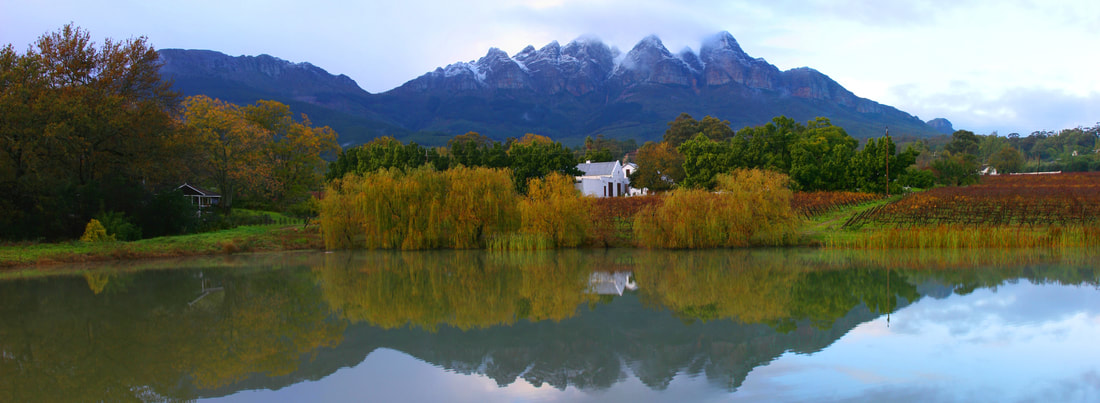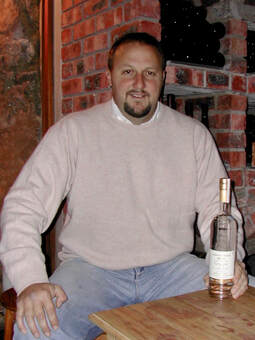 Earlier this week, we were bottling James McKenzie’s “Lady Anna”, and I had the privilege to be invited into his office to hear about the history of his farm and his own background. And I must say the gentleman is a fount of knowledge… Back in time… “Nabygelegen was first founded in 1712. The first farmer, Ian Lorentz, came from Rostock in Northern Germany, on the Baltic.” James believes “he was an accountant in the Dutch East India Company, and after 25 years of service, he was granted his own farm” in 1707. Title was issued to Jan for ‘the 20 morgen 320 square rood farm Stuk Land at Bovlei, Wamakersvallei’ on 11 May 1712. According to James, “what happened a lot at that time with these European settlers that were accountants or traders, is that they didn’t really have a clue about farming, and they were also not strong people, so they mostly died after 2 to 3 years. Either the wild animals would get them, or they would get sick.” And that what may have happened with Jan Lorentz… (NB: As often with history, this is only one of the many different versions that can be found about Johann/Jan Lourens/Lohrentz/Lorenz… ) “There were several other owners (a total of 11 owners of Nabygelegen so far). But one of the most famous ones was a lady called Anna Lategan. It was actually very unusual in 1780 for a woman to own property. She owned 3 farms in the Valley: Nabygelegen, De Compagnie, and Canetsfontein. She was famous for being one of the first people in the Cape to release her slaves (these farms were all slave farms in the 1700s). Anna Lategan also built the old winery”, and as you must have guessed, James’ White Blend “Lady Anna” was named after this exceptional Lady. “There were several farmers after that, but from the 1840s, Nabygelegen belonged to the Du Toit family”, which is the family James bought the farm from… Portrait of a Gentleman Farmer James says himself that his background his very strange. He is from Joburg originally, worked in Switzerland and London as a banker, a currency trader and a bond trader. Then he decided to change his life, so he bought a farm on the Bovlei in Wellington. He has been the owner of Nabygelegen for 20 years now. All the grapes on his farm are made into wine in the little cellar, and James has been the winemaker for 15 of the 20 years he has owned the farm. “The real enjoyment that I get out of my life is growing grapes (and olives, I love growing olive trees), and making wine!”. What a lesson of wisdom! [James also says that neighbors are welcome to contact his office team in case they want to make sure it is not going to rain for a special occasion. “Have you noticed that whenever we have a bottling production, it rains?” he tells me, laughing.] The wines “We make about 120,000 bottles a year, (10,000 cases), red and white wine. I think we are probably well-known for Chenin Blanc, and for big powerful red wines, like ‘Scaramanga’’ or ‘Seventeen Twelve’. ‘Scaramanga’ is a new-world blend, the ‘Seventeen Twelve’ is more classical, old style of wine.” James is also the man behind the Snow Mountain Wines range, a brand that he started “with handcrafted wines from high-altitude sites, then progressed to parcels not necessarily elevated but unique or interesting” (Source: Platter’s Guide 2018) Most of Nabygelegen’s Wines are sold overseas, and “If you are asking the things that make me most excited, it is about selling wine in Italy and in France where, obviously, some great wines are made.” (even though these 2 countries are obviously not James’ main target markets). Contact Details : Address: R 301, Wellington, Republic of South Africa GPS: S33 37’ 54.7” E019 3’ 51.2” Email: [email protected] Phone: +27 21 873 7534
0 Comments
Leave a Reply. |
The AuthorI landed in Cape Town in July 2013 and entered the South African Wine industry shortly after that. Raised in the South of France by a Bordeaux blend lover, it must have been written in the stars that I would one day or the other take part into that fascinating world (although my part is tiny...) Archives |



 RSS Feed
RSS Feed